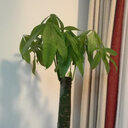Corrosion behaviours of the dental magnetic keeper complexes made by different alloys and methods.
Keywords
Abstract
The keeper and cast dowel-coping, as a primary component for a magnetic attachment, is easily subjected to corrosion in a wet environment, such as the oral cavity, which contains electrolyte-rich saliva, complex microflora and chewing behaviour and so on. The objective of this in vitro study was to examine the corrosion resistance of a dowel and coping-keeper complex fabricated by finish keeper and three alloys (cobalt-chromium, CoCr; silver-palladium-gold, PdAu; gold-platinum, AuPt) using a laser-welding process and a casting technique. The surface morphology characteristics and microstructures of the samples were examined by means of metallographic microscope and scanning electron microscope (SEM). Energy-dispersive spectroscopy (EDS) with SEM provided elements analysis information for the test samples after 10% oxalic acid solution etching test. Tafel polarization curve recordings demonstrated parameter values indicating corrosion of the samples when subjected to electrochemical testing. This study has suggested that massive oxides are attached to the surface of the CoCr-keeper complex but not to the AuPt-keeper complex. Only the keeper area of cast CoCr-keeper complex displayed obvious intergranular corrosion and changes in the Fe and Co elements. Both cast and laser-welded AuPt-keeper complexes had the highest free corrosion potential, followed by the PdAu-keeper complex. We concluded that although the corrosion resistance of the CoCr-keeper complex was worst, the keeper surface passive film was actually preserved to its maximum extent. The laser-welded CoCr- and PdAu-keeper complexes possessed superior corrosion resistance as compared with their cast specimens, but no significant difference was found between the cast and laser-welded AuPt-keeper complexes. The Fe-poor and Cr-rich band, appearing on the edge of the keeper when casting, has been proven to be a corrosion-prone area.




